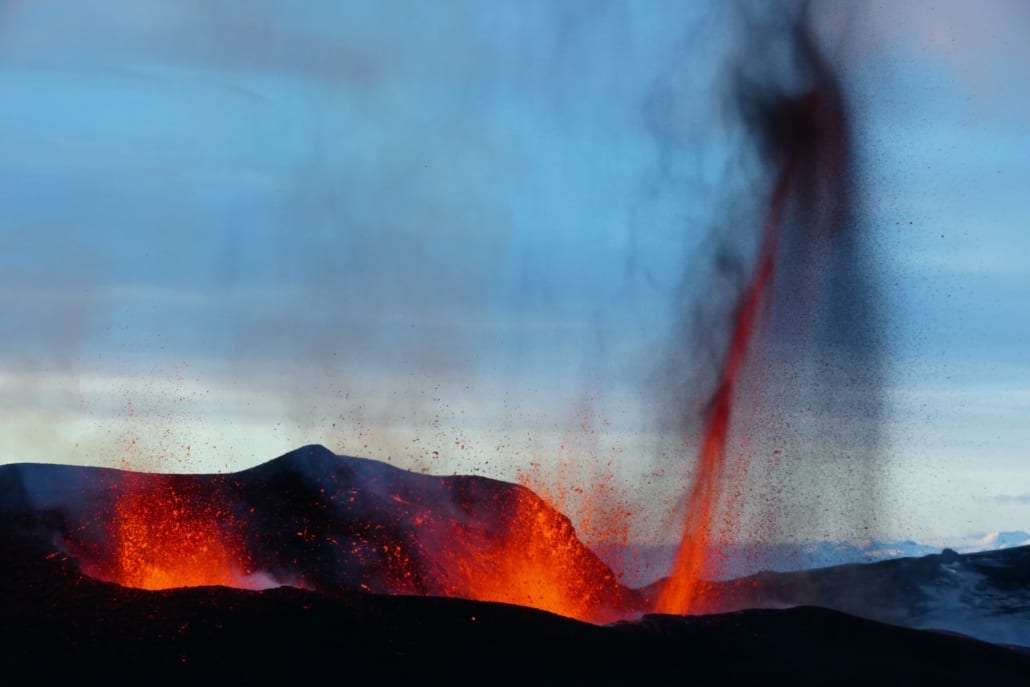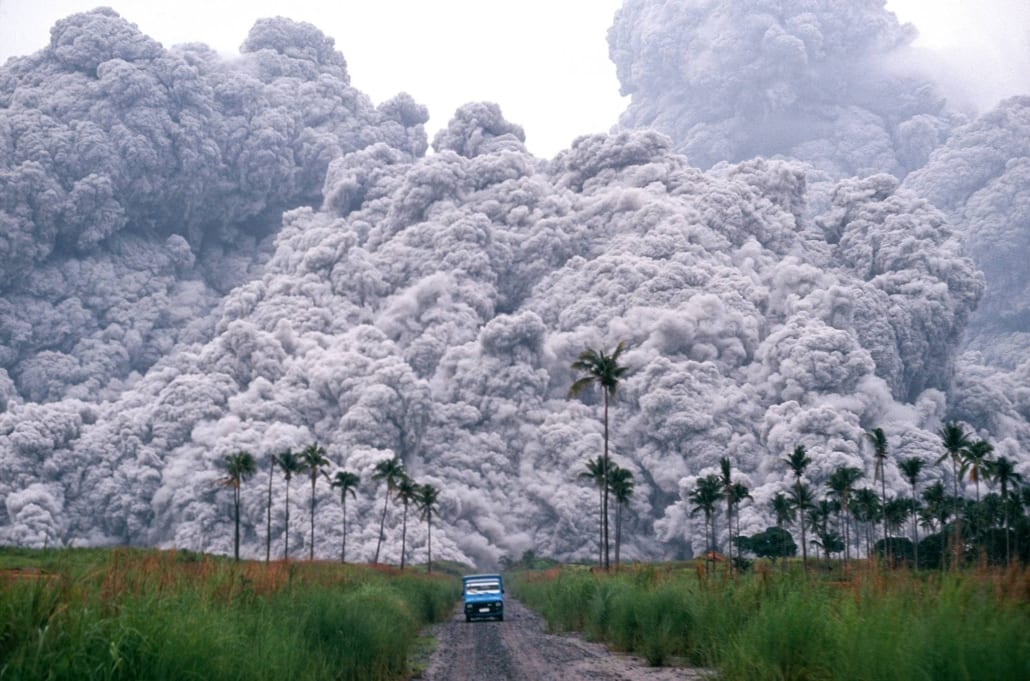The eruptive mechanisms of a volcano depend on a complex relationship of Physico-chemical parameters that control the magmas, including SiO2 content, volatile content (mainly water vapour) and viscosity.
The VEI is a volcanic explosivity index that rates the destructive potential of an eruption with a number.
It is difficult to assign a magnitude to an eruption quantitatively. Walker (1980) suggested some parameters that could adequately characterise the nature and size of an explosive eruption, a scale similar to the Richter scale for measuring the magnitude of earthquakes. The VEI ranges from 0 to 8, with each numerical interval representing a tenfold increase in volcanic explosivity compared to the previous one, so in 1982, the VEI was defined as the volcanic explosion index for measuring the magnitude of a volcanic eruption, with eight being the highest degree.
It is an index that combines several factors: total volume of products ejected by the volcano (lava, pyroclastic material, volcanic ash, etc.), height reached by the eruptive cloud, duration of the eruption, tropospheric and stratospheric injection of the ejected products. The dispersive power is the area over which volcanic products are distributed and is related to the height of the eruptive column.
Through this explosive index, we can describe the destructive potential of an eruption: the extent of destruction of buildings, farmland, vegetation, the spread of ash on the ground, the impact of the volcanic dust veil.
However, this VEI has certain limitations, including the difficulty of measuring the actual volume of pyroclastic materials. Indeed, when the materials disperse into the sea or burn rapidly, the data are lost. Another limitation is the duration of the eruptions because until the eruption is over (and sometimes it could last for years), the total volume of projected materials cannot be accurately known.

Since 1815 and the Tambora eruption, eruptions have never exceeded the VEI 6 threshold.
The 2010 eruption of Eyjafjöll (Iceland) is known as VEI 4.
It is estimated that VEI6 eruptions occur on average every 100 years, VEI 7 eruptions every 1000 years and VEI 8 eruptions with irreparable damage every 100,000 years.
For example, let’s take the last VEI 7 eruption in history: the Tambora eruption in 1815 and analyse the impacts.
- This is a 43 m high eruptive plume (exceeding the troposphere and entering the stratosphere), the magnitude of its eruption leaves particles in suspension, the coarser ones remain in the atmosphere for 2 weeks and the finer ones for several months and years. All the elements suspended in the upper atmospheric layers influence the global climate.
- The Tambora eruption released in 24 hours (10-11 April 1815) several tons of SO₂ (53-58X106) which were converted into several tons of H₂SO₄ (93-118X106) aerosols. The emitted SO2 is slowly transformed into sulphuric acid (H2SO4), which condenses in the atmosphere and precipitates as a rain of very fine particles. The concentration of these particles causes what is called aerosol.
- Combined with particulate matter (dust and ash), sunlight, oxygen (O2) and moisture interact to form a volcanic veil, also known as vog (volcanic smog). The presence of vog in high concentrations forms a dense gaseous layer called a solar shield, the presence of which prevents full penetration of sunlight. The climatic impact was postponed by – 0.8 to 1.3°C for 2 to 3 years. The famous non-summer year of 181. By its eruptive mechanism the volcano is closely linked to the climate and its dynamics.
- More than 90 000 deaths, 11 000 directly related to the impact of the eruption.
- More than 60 000 related to famine, the ash covered the landscape for 600 km, including all crops, leaving everything buried in ash.
- A tsunami of 3 to 4 metres was recorded, the sound of the eruption was heard up to 2500 km and a shock wave identical to a nuclear shock wave spread to the village of Sanggar.

The volcanoes we identify with levels 7 and 8 of the VEI type, the so-called super volcanoes, because of their consequent destruction.
However, volcanology is a science that we studied only recently, the understanding of the global dynamics of the earth in the 1960s has shown the importance of studying volcanoes. Today, there is still no direct pathway in volcanology (globally). It is a matter of cross-checks of sectors and options.
The VEI 7 and 8 eruption studies we have on record are studies done in conjunction with historians.
Let’s take an example close to us, the famous VEI 7 of the Campi Flegrei volcano in the Gulf of Naples (1538).
The situation in the Gulf of Naples is complicated by the presence of two volcanoes Campi Flegrei (VEI 7) and Vesuvius (VEI 5) located immediately below a large part of the modern city of Naples.
The caldera of the Campi Flegrei volcano was formed 39,000 years ago and is the largest eruption in 200,000 years. Campi Flegrei includes 24 craters.
Although it has been almost 500 years without activity, the last one dating back to 1538, Campi Flegrei includes two massive eruptions, 39,000 and 15,000 years ago, which left deep calderas in the landscape. Its last significant volcanic event was an eruption in 1538, known as Monte Nuovo.
Signs of activity have been observed since 1969-1974 and 1982-1984. Learn more about the Campi Flegrei here.
Due to the increased activity of the Campi Flegrei volcanic area, the Vesuvius Observatory (INGV: Istituto Nazionale di Geofisica e Vulcanologia) publishes weekly bulletins for the Civil Protection Department.
Society should give the necessary importance to these studies and controls because of the magnitude of the possible explosion, it is urgently needed to have under control all the most powerful volcanoes in the world and to be prepared with current and functional evacuation plans. Do you already know which are the 5 most dangerous volcanoes in the world?

Search
VOLCANO ACTIVE FOUNDATION
VOLCANO ACTIVE FOUNDATION RESPONSABILITY
nº 2195 authorised by the Madrid's Minister of Justice
NIF G67314625
SF Abocados Francesc Macia 7 pl17
08029 Barcelona, Spain





